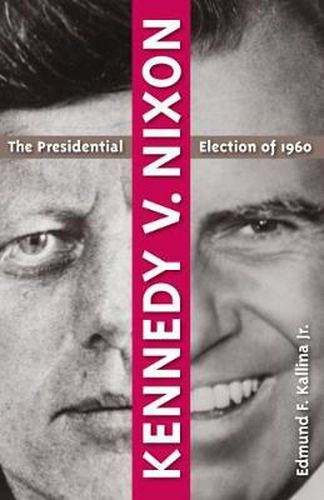Readings Newsletter
Become a Readings Member to make your shopping experience even easier.
Sign in or sign up for free!
You’re not far away from qualifying for FREE standard shipping within Australia
You’ve qualified for FREE standard shipping within Australia
The cart is loading…






This title is printed to order. This book may have been self-published. If so, we cannot guarantee the quality of the content. In the main most books will have gone through the editing process however some may not. We therefore suggest that you be aware of this before ordering this book. If in doubt check either the author or publisher’s details as we are unable to accept any returns unless they are faulty. Please contact us if you have any questions.
For almost half a century The Making of the President, 1960 has stood as the standard work on this topic. Kallina has exposed the mythology of Theodore White’s description of Camelot. For the first time we have an unbiased portrayal of what happened before, during, and after that pivotal election. –Irving F. Gellman, author of The Contender: Richard Nixon, the Congress Years, 1946-1952
Readers will never look at the historic 1960 election the same way again. –Matthew Corrigan, author of Race, Religion, and Economic Change in the Republican South
Kennedy v. Nixon is a book for everyone who thinks they know what happened in the pivotal election year of 1960. For fifty years we’ve accepted Theodore White’s premise (from The Making of the President, 1960) that Kennedy ran a brilliant campaign while Nixon committed blunder after blunder.
But White the journalist was a Kennedy partisan and helped establish the myth of Camelot. Now, five decades later, Edmund Kallina offers a fresh overview of the election’s most critical and controversial events.
Based upon research conducted at four presidential libraries–those of Eisenhower, Kennedy, Johnson, and Nixon–Kallina is able to make observations and share insights unavailable in the immediate aftermath of one of the closest races in American presidential history. He describes the strengths and mistakes of both camps, and examines the impact of civil rights, Cold War tensions, and the televised presidential debates on an election that still looms large in both the political history and the popular imagination of the United States.
$9.00 standard shipping within Australia
FREE standard shipping within Australia for orders over $100.00
Express & International shipping calculated at checkout
This title is printed to order. This book may have been self-published. If so, we cannot guarantee the quality of the content. In the main most books will have gone through the editing process however some may not. We therefore suggest that you be aware of this before ordering this book. If in doubt check either the author or publisher’s details as we are unable to accept any returns unless they are faulty. Please contact us if you have any questions.
For almost half a century The Making of the President, 1960 has stood as the standard work on this topic. Kallina has exposed the mythology of Theodore White’s description of Camelot. For the first time we have an unbiased portrayal of what happened before, during, and after that pivotal election. –Irving F. Gellman, author of The Contender: Richard Nixon, the Congress Years, 1946-1952
Readers will never look at the historic 1960 election the same way again. –Matthew Corrigan, author of Race, Religion, and Economic Change in the Republican South
Kennedy v. Nixon is a book for everyone who thinks they know what happened in the pivotal election year of 1960. For fifty years we’ve accepted Theodore White’s premise (from The Making of the President, 1960) that Kennedy ran a brilliant campaign while Nixon committed blunder after blunder.
But White the journalist was a Kennedy partisan and helped establish the myth of Camelot. Now, five decades later, Edmund Kallina offers a fresh overview of the election’s most critical and controversial events.
Based upon research conducted at four presidential libraries–those of Eisenhower, Kennedy, Johnson, and Nixon–Kallina is able to make observations and share insights unavailable in the immediate aftermath of one of the closest races in American presidential history. He describes the strengths and mistakes of both camps, and examines the impact of civil rights, Cold War tensions, and the televised presidential debates on an election that still looms large in both the political history and the popular imagination of the United States.